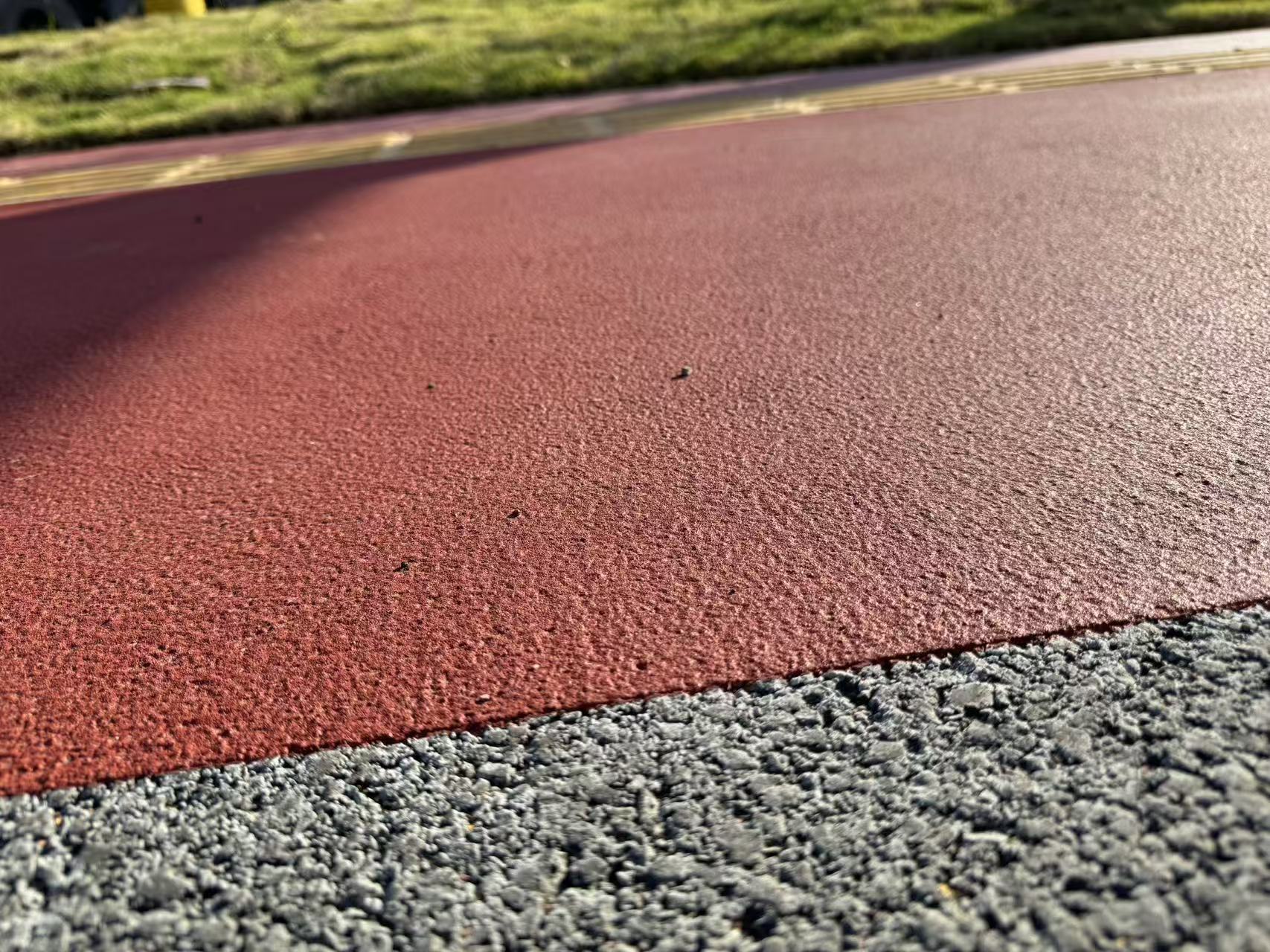Technical Parameters of Colored Slurry Seal
Colored slurry seal, an advanced pavement preservation technology, combines aesthetic appeal with functional durability. It involves the application of a specialized mixture of emulsified asphalt, aggregates, water, additives, and pigments to create a vibrant, seamless surface layer. Understanding the technical parameters of colored slurry seal is crucial for achieving optimal performance and ensuring the longevity of treated pavements. This article outlines the key technical parameters that govern the design and application of colored slurry seal.

1. Composition and Mix Design
- Asphalt Emulsion:
- Type: Typically, cationic or anionic slow-setting emulsions are used, depending on the project requirements and climate conditions.
- Residual Asphalt Content: The percentage of asphalt binder left after the emulsion breaks and water evaporates, usually ranging from 45% to 65%.
- Aggregates:
- Size Distribution: Aggregate particles are typically sized between 0.075 mm and 4.75 mm (fine aggregates) to ensure a smooth, homogeneous surface.
- Type and Quality: Crushed limestone, granite, or other durable aggregates are commonly used, with specific gradations tailored to the mix design.
- Water:
- Quantity: The amount of water added affects the workability and setting time of the slurry. It is usually adjusted to achieve the desired viscosity and ease of application.
- Additives:
- Setting Accelerators/Retarders: These adjust the setting time of the emulsion to suit ambient temperatures and application timelines.
- Anti-Strip Agents: Used to enhance adhesion between the asphalt binder and aggregates.
- Pigments: High-quality, light-fast pigments are added to achieve the desired color, with careful consideration given to color stability and fade resistance.
2. Application Parameters
- Rate of Spread:
- Typically measured in square meters per liter (m²/L) or gallons per square yard (gal/sq yd), this parameter affects the thickness of the applied layer and the overall cost.
- Coverage:
- The actual coverage achieved depends on the aggregate gradation, asphalt content, and application technique, with typical values ranging from 1.5 to 3.0 m²/L.
- Setting Time:
- The time required for the slurry to set and traffic to resume varies based on ambient temperatures, emulsion type, and additives used. It typically ranges from a few hours to a day.
- Traffic Restriction:
- Post-application, traffic restrictions are necessary to allow the slurry to cure fully. The duration of these restrictions depends on the setting time and mix design.
3. Performance Standards
- Durability:
- Colored slurry seal should resist wear and tear from traffic, weather, and chemicals, maintaining its color and integrity over time.
- Water Resistance:
- The mix must effectively prevent moisture intrusion, which can lead to cracking, softening, and overall pavement deterioration.
- Flexibility:
- The slurry should maintain flexibility at low temperatures to prevent cracking and remain durable under cyclic loading.
- Color Retention:
- Pigments must be light-stable and fade-resistant to ensure long-term color vibrancy.
4. Environmental Considerations
- VOC Emissions:
- The use of water-based emulsions significantly reduces volatile organic compound (VOC) emissions compared to solvent-based systems.
- Resource Efficiency:
- Colored slurry seal extends pavement life, reducing the need for new construction materials and associated environmental impacts.
5. Equipment and Application Techniques
- Mixing Equipment:
- Specialized pugmills or high-shear mixers are used to ensure homogeneous mixing of all components.
- Application Machines:
- Sprayer trucks equipped with accurate metering systems and uniform distribution nozzles are essential for consistent application.
- Surface Preparation:
- The substrate must be clean, dry, and free of debris to ensure proper adhesion and performance of the colored slurry seal.
Understanding and adhering to these technical parameters is vital for achieving successful colored slurry seal applications. By meticulously controlling the mix design, application techniques, and performance standards, practitioners can ensure that treated pavements not only look great but also perform reliably over time.





 Chinese brand Kunjie Materials Company is an environmentally friendly enterprise that provides colored anti-skid pavement, ceramic particle anti-skid pavement, water-based polymer colored pavement, pe...
Chinese brand Kunjie Materials Company is an environmentally friendly enterprise that provides colored anti-skid pavement, ceramic particle anti-skid pavement, water-based polymer colored pavement, pe...